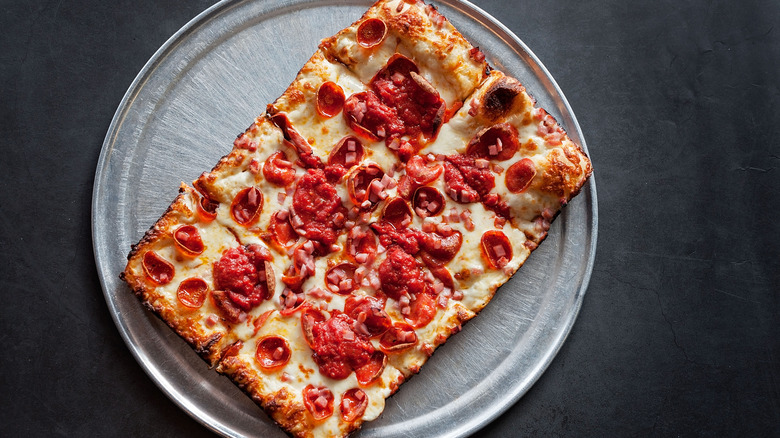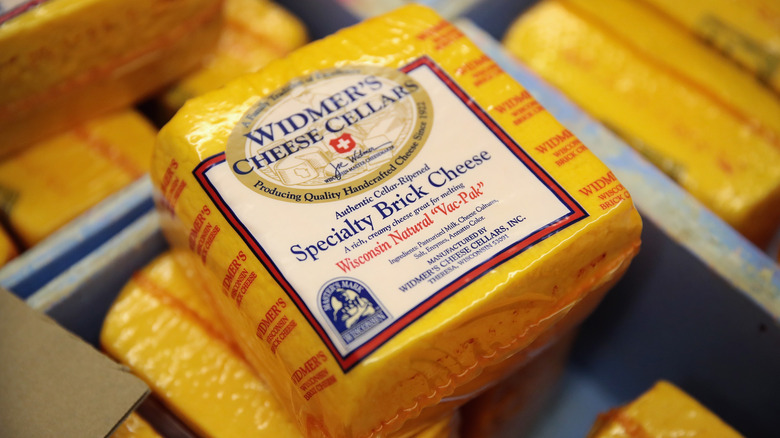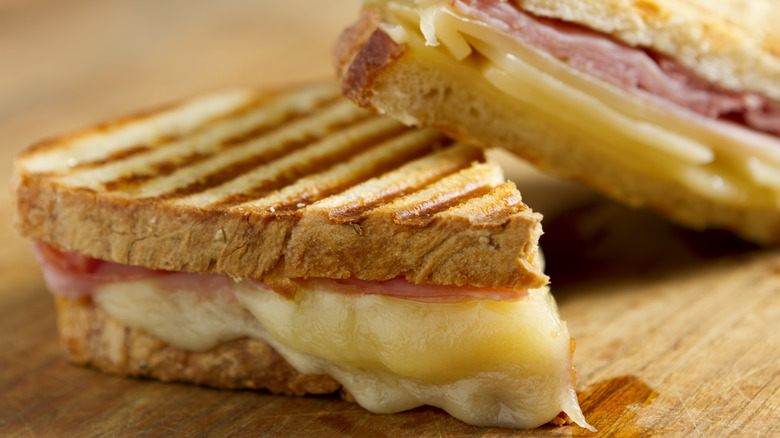The Special Kind Of Cheese Used For Detroit-Style Pizza
Detroit-style pizza is known for its thick yet crispy crust, and distinctive rectangular shape from being baked in heavy steel pans, originally sourced from nearby auto plants. This kind of pizza got its start back in the 1940s in the capital city of Michigan. Its creator, Gus Guerra, drew inspiration from the square-shaped pizza with foccacia-style dough found in Sicily when creating this new style, first served at his joint Buddy's Rendezvous Pizzeria.
Another key part of creating a true Detroit-style pizza is the layering order of the toppings. Cheese and pepperoni are the stars here. They both go on before the sauce — and are spread out across the entire pie, right to the corners of the pan. The cheese falls off the edges, forming a delicious caramelized rim around the pizza. Forget about just using mozzarella here — for a true Detroit pie, you need a Wisconsin specialty called brick cheese.
What is brick cheese?
Brick cheese is reportedly the brainchild of John Jossi, a cheese maker who came to the United States from Switzerland. He began producing it in Wisconsin in 1877 after working in a New York Limburger cheese plant for several years. Jossi had the idea to create a new kind of cheese that would employ the same type of bacteria as Limburger cheese in the cheese-making process, but using a lesser amount. The cheese gets its name from the bricks used to press its curds.
The resulting cheese starts fairly mild when it's young, and it develops a more robust flavor as it ages. As it matures, the cheese becomes tangier and a bit funky, earning it the nickname "the married man's Limburger," according to the Dairy Farmers of Wisconsin website. Brick cheese has a creamy texture and it melts well, which makes it a great choice for a pizza.
Other ways to enjoy brick cheese
Brick cheese may be a leading ingredient in Detroit-style pizza, but that's only one of the many ways to eat this regional specialty. A young brick cheese makes the perfect swap for the more typical cheddar or Gruyére used in potatoes au gratin. It has a nutty quality that makes it a delicious addition to French onion soup, too.
Brick cheese also shines in many different sandwiches. You can try pairing an aged version with liverwurst or bratwurst and mustard on Rye bread to create a tasty German-style bite. A young brick cheese makes a great filling for a grilled cheese sandwich. Because of its soft nature, Brick cheese is easier to slice for sandwiches when it's cold.
Because it's easy to melt, brick cheese works well in omelets and warm dips. Served cold, it can punch up the flavor of salads. Brick cheese also makes an interesting addition to any cheese board — see if any of your guests can pinpoint what kind it is with a blind tasting at your next dinner party.


